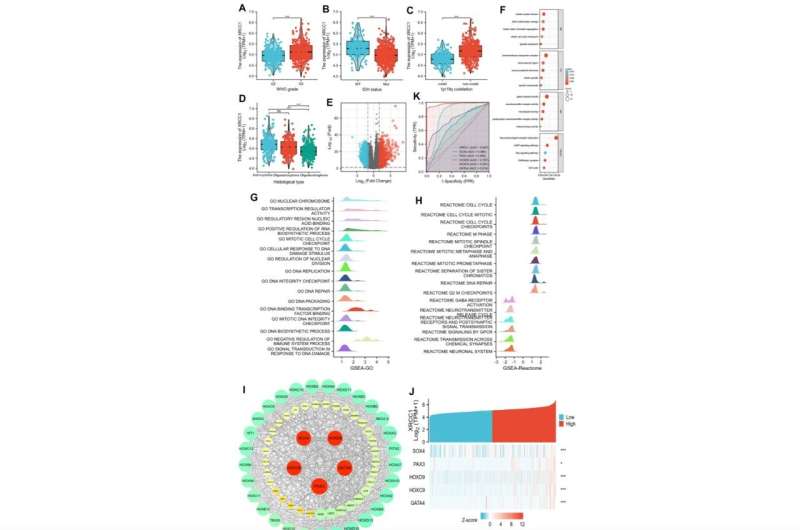This article has been reviewed according to Science X's editorial process and policies. Editors have highlighted the following attributes while ensuring the content's credibility:
fact-checked
proofread
XRCC1: A potential prognostic and immunological biomarker in low-grade gliomas

A new research paper titled "XRCC1: a potential prognostic and immunological biomarker in LGG based on systematic pan-cancer analysis" has been published in Aging.
X-ray repair cross-complementation group 1 (XRCC1) is a pivotal contributor to base excision repair, and its dysregulation has been implicated in the oncogenicity of various human malignancies. However, a comprehensive pan-cancer analysis investigating the prognostic value, immunological functions, and epigenetic associations of XRCC1 remains lacking.
In this new study, researchers aimed to address this knowledge gap by conducting a systematic investigation employing bioinformatics techniques across 33 cancer types.
"Our analysis encompassed XRCC1 expression levels, prognostic and diagnostic implications, epigenetic profiles, immune and molecular subtypes, Tumor Mutation Burden (TMB), Microsatellite Instability (MSI), immune checkpoints, and immune infiltration, leveraging data from TCGA, GTEx, CELL, Human Protein Atlas, Ualcan, and cBioPortal databases," the researchers explain.
Notably, XRCC1 displayed both positive and negative correlations with prognosis across different tumors. Epigenetic analysis revealed associations between XRCC1 expression and DNA methylation patterns in 10 cancer types, as well as enhanced phosphorylation. Furthermore, XRCC1 expression demonstrated associations with TMB and MSI in the majority of tumors.
Interestingly, XRCC1 gene expression exhibited a negative correlation with immune cell infiltration levels, except for a positive correlation with M1 and M2 macrophages and monocytes in most cancers. Additionally, the researchers observed significant correlations between XRCC1 and immune checkpoint gene expression levels. Lastly, their findings implicated XRCC1 in DNA replication and repair processes, shedding light on the precise mechanisms underlying its oncogenic effects.
"Overall, our study highlights the potential of XRCC1 as a prognostic and immunological pan-cancer biomarker, thereby offering a novel target for tumor immunotherapy," the researchers conclude.
More information: Guobing Wang et al, XRCC1: a potential prognostic and immunological biomarker in LGG based on systematic pan-cancer analysis, Aging (2024). DOI: 10.18632/aging.205426
















